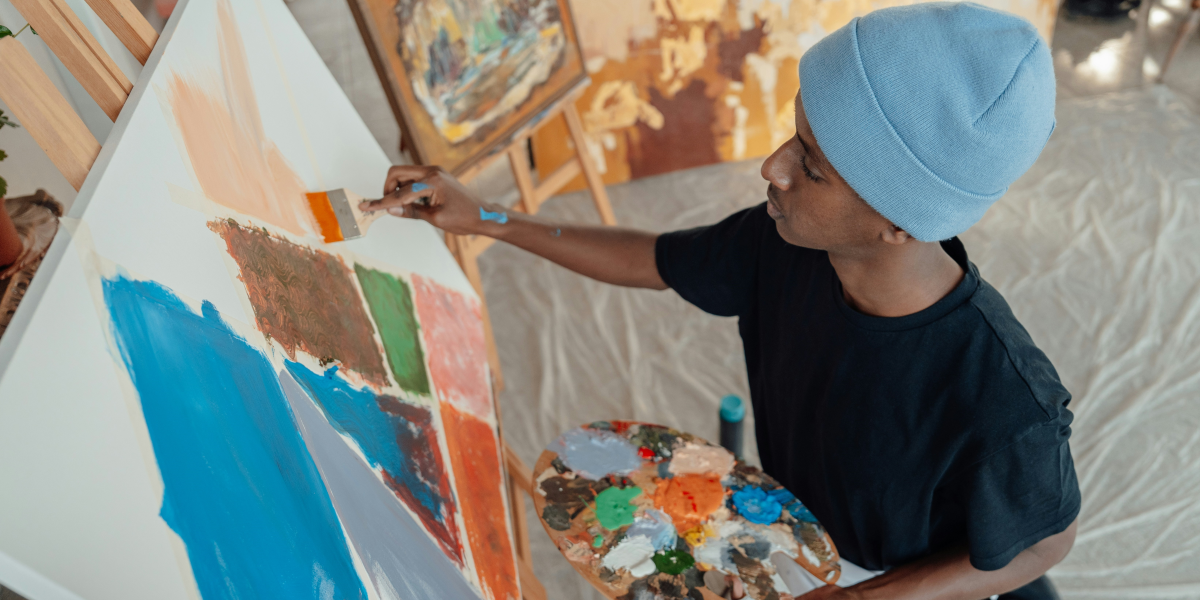Portraiture is an art form that transcends mere replication of a person’s physical features; it delves deeper to capture the essence of a person, reflecting their personality, emotions, and experiences. Whether through a classic oil painting or a modern digital creation, portraiture remains a powerful means of expression that connects us to others and provides insight into the human condition.
What is Portraiture?
Portraiture is an art form focused on capturing a person’s essence through diverse creative mediums. While traditional portrait painting is well-known, today’s artists use a range of techniques, from classic oil paintings to mixed-media works that incorporate fabric, metal, or even digital elements.
Portraits typically focus on the human face to reveal emotions and experiences, though some artists depict the whole body to convey gestures and presence or include background elements to deepen the narrative. Displayed everywhere from museums to digital platforms, portraiture connects us across cultures and times, inviting viewers to understand each subject’s story and reflect on their own identity.
The History and Evolution of Portraiture
Portraiture has roots stretching back to ancient civilizations, long before photography. Early cultures, like those in ancient Egypt, created lifelike images of pharaohs and nobles for tombs and temples. Roman Egypt’s Fayum mummy portraits, with their vivid colors, reveal personalities from thousands of years ago.
During the Renaissance and Baroque periods, portraiture became a tool for personal and political symbolism, showcasing the wealth and power of royalty and aristocrats. Artists like Hans Holbein the Younger and Rembrandt used exquisite detail and dramatic lighting to capture both physical likeness and inner character.
In the 19th and 20th centuries, portraiture transformed again. Impressionists like Monet captured fleeting emotions, while modern artists like Picasso and Kahlo explored identity. Pop artists such as Warhol challenged ideas about fame, blending portraiture with celebrity culture. Today, portraiture embraces digital art, 3D modeling, and AI, pushing creative boundaries but staying true to its core purpose of revealing the human spirit.
The Significance of Portraiture
Portraiture serves as both a personal and historical record. On a personal level, portraits preserve memories, celebrate milestones, and honor loved ones. Historically, they offer a glimpse into the lives, appearances, and societal roles of people from different eras. By studying details like clothing and setting, viewers gain insight into social structures and cultural values.
Portraiture also has the power to challenge perspectives on identity and diversity. It can celebrate marginalized communities, amplify underrepresented voices, and question traditional beauty standards. Contemporary portrait artists often explore themes of race, gender, and identity, bringing visibility to individuals and communities that are often overlooked in mainstream art.
Modern Portraiture and Technology
The future of portraiture is incredibly promising, fueled by advancements in technology that offer new creative possibilities. Digital tools allow artists to experiment in ways previously unimaginable. Digital painting programs, 3D modeling, and augmented reality (AR) are now part of the portrait artist’s toolkit, enabling them to create portraits that blend reality and virtual elements. AR and virtual reality (VR) allow viewers to interact with portraits in immersive environments, transforming the experience of viewing art.
Social media platforms have also democratized portraiture, allowing artists to share their work with global audiences instantly. Digital portraits shared on Instagram or TikTok reach viewers worldwide, bridging cultural divides and enabling personal connections across vast distances.
Even artificial intelligence has entered the portraiture landscape, with AI-generated portraits offering new perspectives on creativity and authorship. Programs like DeepArt and DALL-E allow users to create unique portraits using algorithms, sparking debates about the definition of art and the role of the artist in the creative process.
Choosing the Right Portrait Medium
Choosing a medium is a crucial aspect of creating a portrait, as each medium brings different qualities to the work. Traditional oil painting offers richness and depth that lend themselves to capturing intricate details and textures. Pencil and charcoal provide softer, more intimate portrayals, often capturing mood and emotion with subtle shading.
In contrast, digital portraits offer flexibility and experimentation. Digital tools make it easier to incorporate vibrant colors, layered textures, and even animation, providing a broader range of expression. Mixed media is also popular in modern portraiture, with artists combining photography, fabric, or metal for texture and depth. The choice of medium can significantly influence how a portrait resonates with viewers, adding layers of meaning and context.
The Enduring Power of Portraiture
Despite the continuous evolution of tools and styles, the essence of portraiture remains the same: to capture the essence of a person in a single image. Portraits give us glimpses into lives, personalities, and experiences, encouraging empathy and connection across time and space. The art form has the unique ability to reveal human nature in its raw, beautiful complexity, making it timeless and universally relevant.
As artists explore new techniques and technologies, portraiture continues to captivate and inspire. Whether through traditional methods or digital innovation, portraiture remains a profound way to celebrate individuality, capture human experiences, and challenge societal norms. As we look to the future, the possibilities are endless, yet the purpose of portraiture remains timeless: to capture and honor the human spirit.
Published by: Khy Talara














